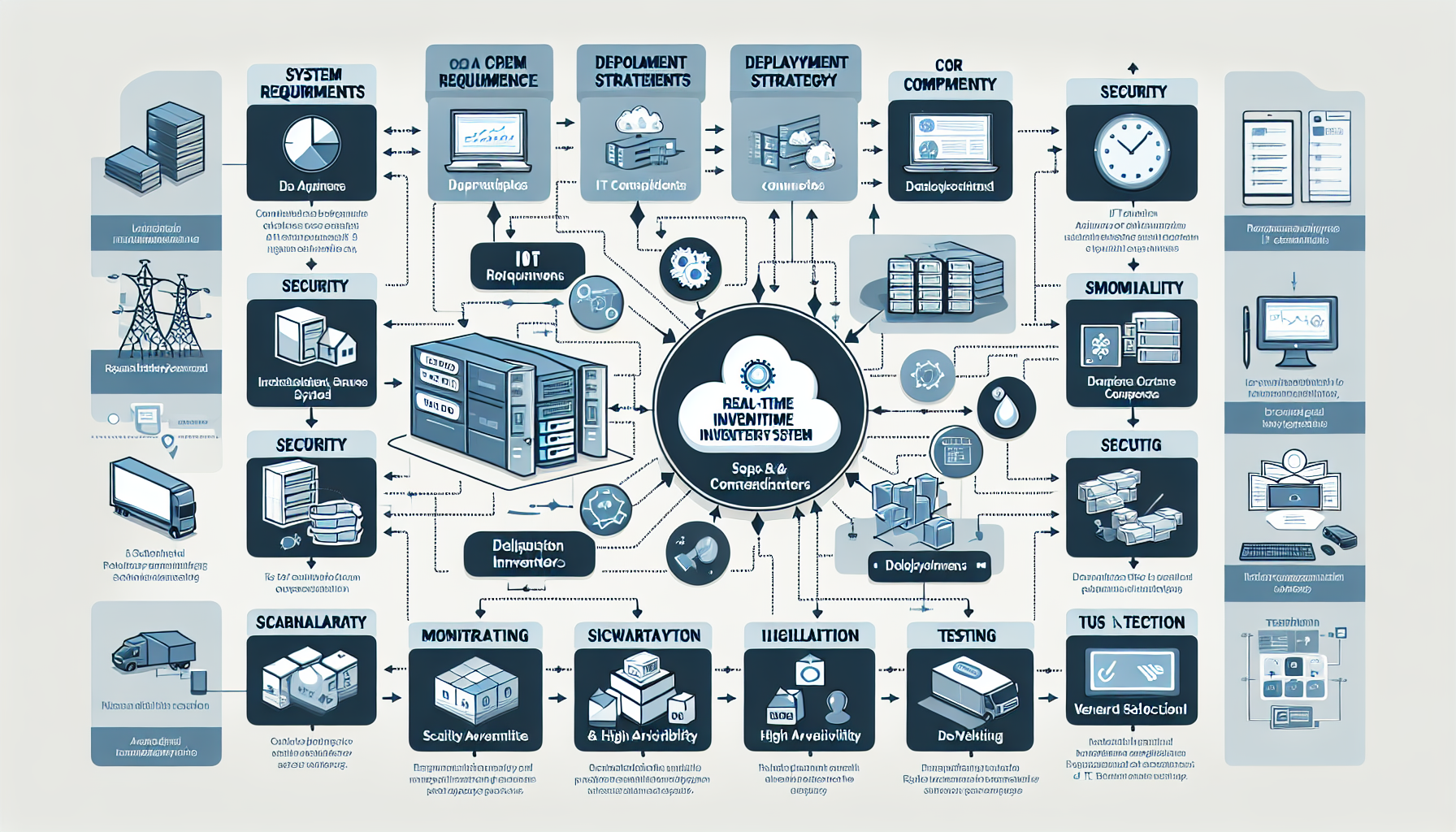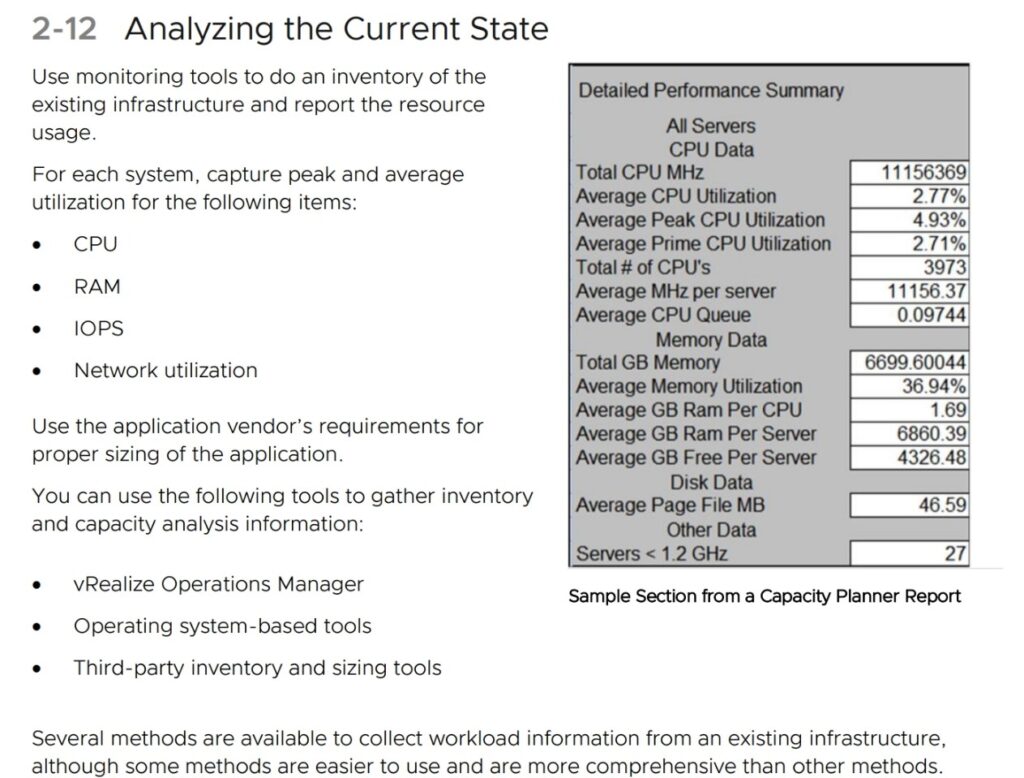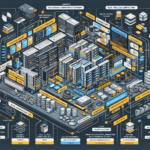Configuring IT infrastructure for a real-time inventory system requires careful planning to ensure reliability, scalability, and performance. Real-time inventory systems rely on accurate data processing and quick responses, so the IT infrastructure must provide high availability, low latency, and robust data handling. Here’s a step-by-step guide to configuring your IT infrastructure for such a system:
1. Understand the System Requirements
- Data Flow: Identify how data flows through the system. For example, IoT sensors, barcodes, RFID scanners, and manual entry points need to feed inventory updates to the central system.
- Scale: Determine the number of transactions per second and the expected growth over time.
- Latency: Real-time systems require low latency. Set a performance benchmark (e.g., updates must reflect in under 1 second).
- Availability: Define required uptime (e.g., 99.9% or higher).
- Integration: Consider integration points with ERP systems, eCommerce platforms, or WMS (Warehouse Management Systems).
2. Core Components of the IT Infrastructure
To meet the requirements of a real-time inventory system, the following components are essential:
#### a. Servers:
– Deploy high-performance servers to handle the transactional workload. Use modern CPU and GPU capabilities for workload acceleration if needed.
– Use containerized microservices to handle specific inventory system tasks, such as order tracking, stock level updates, and reporting.
– Ensure scalability via vertical scaling (adding resources like CPU/RAM) or horizontal scaling (adding more servers).
#### b. Storage:
– Use high-speed storage solutions like NVMe SSDs or all-flash arrays for low-latency data access.
– Implement scalable storage (e.g., object storage like AWS S3 or on-premise Ceph) for handling large datasets.
– Enable real-time replication to ensure data consistency across multiple locations.
#### c. Database:
– Choose a database suited for high transaction rates:
– Relational: MySQL, PostgreSQL with replication for ACID compliance.
– NoSQL: MongoDB, Cassandra, or DynamoDB for scalability.
– Implement read replicas for read-heavy workloads.
– Use caching layers like Redis or Memcached for frequently accessed data.
#### d. Networking:
– Deploy low-latency, high-bandwidth networking (10GbE or higher for on-premises).
– Implement redundant network paths with failover to prevent downtime.
– Use load balancers (e.g., HAProxy, NGINX, or cloud-based load balancers) to distribute traffic across servers.
#### e. Virtualization and Containers:
– Use virtualization (VMware, Hyper-V) for flexibility and resource optimization.
– Leverage containerization (Docker, Kubernetes) for managing microservices and scaling workloads easily.
#### f. Kubernetes & Orchestration:
– Deploy Kubernetes for container orchestration, enabling scalability, self-healing, and zero-downtime deployments.
– Use Kubernetes features like Horizontal Pod Autoscaling (HPA) and Cluster Autoscaler to scale resources based on demand.
#### g. Backup & Disaster Recovery:
– Implement real-time replication and snapshots for critical databases and applications.
– Use backup solutions like Veeam, Commvault, or AWS Backup for disaster recovery.
– Test disaster recovery plans regularly to ensure minimal downtime.
#### h. AI/Analytics:
– Utilize AI tools (e.g., TensorFlow, PyTorch) for demand forecasting, anomaly detection, and inventory optimization.
– Integrate real-time analytics platforms like Apache Kafka or Apache Flink for streaming data processing.
3. Cloud, On-Premises, or Hybrid?
Decide the deployment strategy based on your budget, scalability needs, and compliance requirements.
- On-Premises: Use for low-latency requirements or compliance reasons. Invest in modern hardware, virtualization, and storage solutions.
- Cloud: Use services like AWS, Azure, or GCP for scalability and flexibility. Examples:
- Amazon RDS for databases.
- AWS Lambda for event-driven tasks.
- S3 for object storage.
- Hybrid: Use a hybrid approach to combine the benefits of on-premises and cloud. Utilize tools like Azure Arc or AWS Outposts for seamless integration.
4. Security
Protect your real-time inventory system from cyber threats:
– Implement firewalls (e.g., Fortinet, Palo Alto) and intrusion detection/prevention systems (IDS/IPS).
– Use TLS encryption for data in transit and encryption at rest for sensitive data.
– Enforce role-based access control (RBAC) and multi-factor authentication (MFA).
– Regularly patch servers, containers, and applications.
5. Monitoring and Alerts
- Use monitoring tools like Prometheus, Grafana, or Nagios for real-time performance tracking of servers, storage, and network.
- Monitor application performance with tools like New Relic or Dynatrace.
- Set up alerting systems to notify the IT team of anomalies or failures.
6. IoT Integration
If IoT devices like RFID scanners or smart shelves are used:
– Use MQTT brokers (e.g., Mosquitto, RabbitMQ) to handle IoT message communication.
– Process IoT data streams in real-time using platforms like Apache Kafka or AWS IoT Core.
– Ensure IoT devices are secure through firmware updates and network segmentation.
7. Scalability and High Availability
- Set up auto-scaling for servers and Kubernetes clusters to handle peak loads.
- Deploy systems in active-active or active-passive failover configurations to ensure availability.
- Use multi-region deployments for geographic redundancy.
8. Testing
- Conduct load testing to simulate peak traffic and ensure the system can handle the required volume.
- Perform failure testing to verify that failover mechanisms work as expected.
9. Vendor Selection
Choose reliable vendors for your hardware and software stack:
– Servers: Dell EMC, HPE, Lenovo.
– Storage: NetApp, Pure Storage, or Dell PowerStore.
– Cloud: AWS, Azure, or Google Cloud.
– Networking: Cisco, Aruba, or Juniper.
Example Architecture
- Frontend: A web or mobile application for managing inventory.
- Backend: RESTful APIs or GraphQL to handle requests.
- Middleware: Apache Kafka for real-time event processing.
- Database: PostgreSQL with Redis cache.
- Kubernetes: For containerized microservices.
- Monitoring: Prometheus and Grafana for real-time insights.
By following these steps and customizing them based on your business needs, you can build a robust IT infrastructure for your real-time inventory system.




